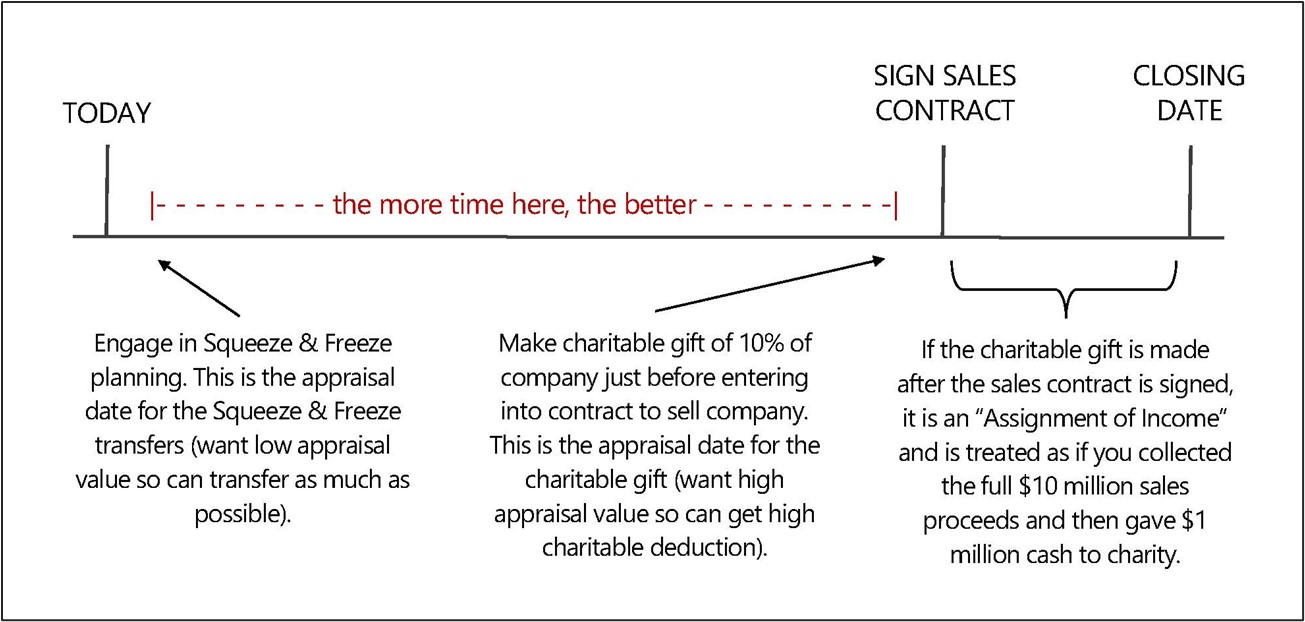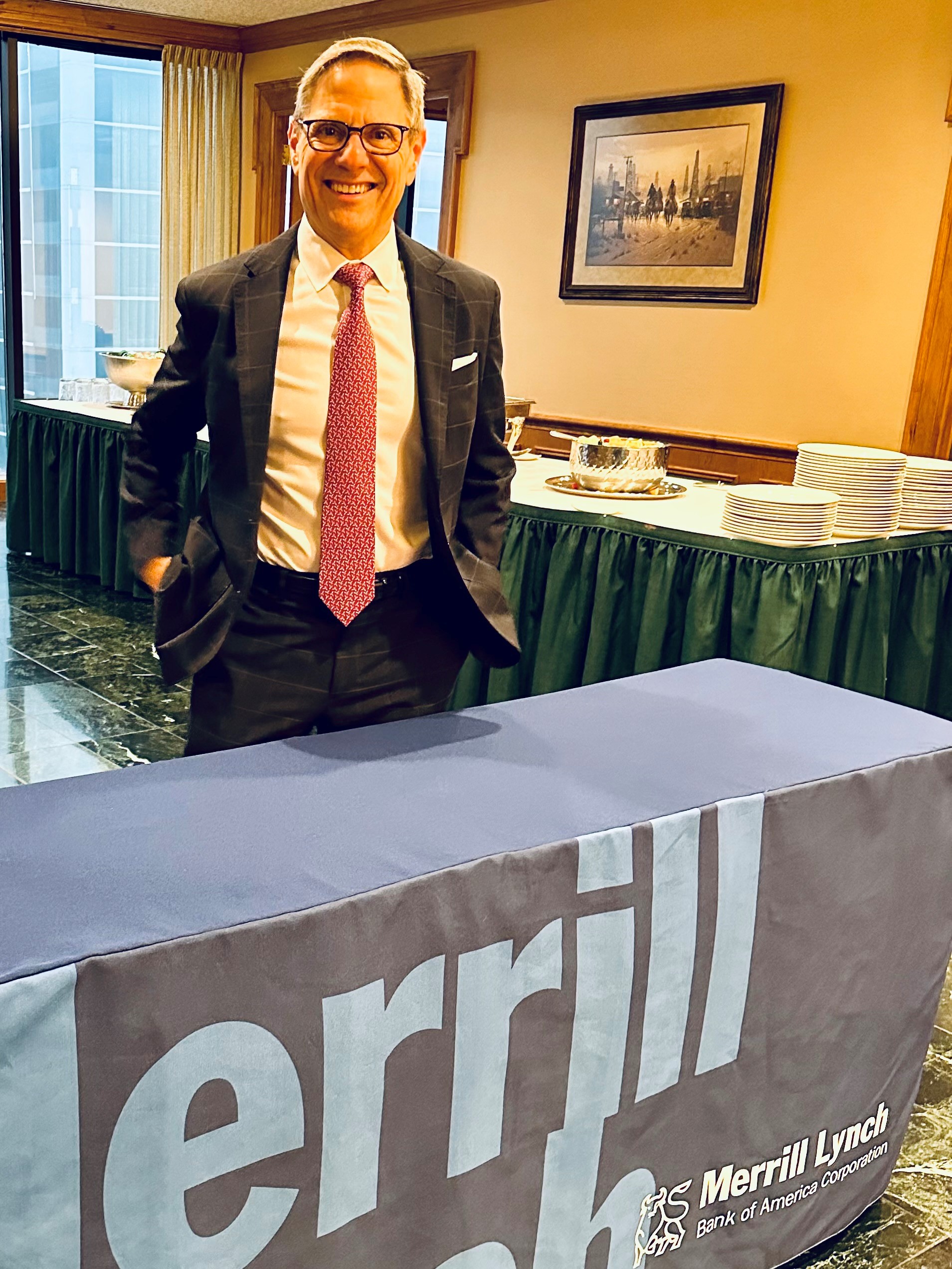When I spoke recently at a Business Owners Conference sponsored by Bank of America/Merrill Lynch, I learned that 50% of owners will sell their business over the next 10 years. Much of the conference was devoted to one primary goal: how to maximize the sales price. When it was my turn, I built on that with a corollary goal: how to minimize the tax bite. The two goals work together, as maximizing the sales price and minimizing tax both operate to leave more in the family’s pocket at the end of the day.
Minimizing tax is aimed at saving both income tax and estate tax. To reduce income tax: we explore Section 1202 Qualified Small Business Stock (QSBS), charitable remainder trusts (CRTs), installment sale techniques, transfers of business interests to charity prior to sale, investing proceeds in Qualified Opportunity Zone deals, and other tools. To reduce estate tax: we turn to “squeeze & freeze” planning. The “squeeze” comes from business entity structures that achieve valuation discounts. The “freeze” involves transferring discounted business interests to trusts, such as Defective Grantor Trusts (DGTs), Spousal Lifetime Access Trusts (SLATs), 678 Trusts, Grantor Retained Annuity Trusts (GRATs), and charitable trusts.
In my speech, I used the Walton family (founders of Walmart and Sam’s Club) as a poster child for avoiding estate tax. Because of the Walton family’s success, many dubbed the estate tax a “voluntary tax.” My thesis is that if the Waltons (one of the world’s richest families) can avoid estate tax, so can you. I followed up with examples of our own clients who erased millions of dollars of estate tax by “squeeze & freeze” planning. Moreover, several of the techniques allow you to: (1) retain control, (2) retain access, and (3) retain flexibility so you’re not locked into an estate disposition that you later wish to change.
In talking to business owners who own 100% of their company, I admonished that unless they engage in tax planning, they actually have a silent business partner who owns 40% or more of their company: the U.S. Government.
Other speakers lamented that we are in an economic downturn. It isn’t October 2021 anymore. With interest rates soaring, the market has cooled considerably. I turned that lament on its head with the counter-intuitive announcement that today’s economic downturn makes now the perfect time to do “squeeze & freeze” planning. The market cooling works to our advantage, as we can now transfer assets out of the estate at lower valuations. This works for not only a family business but indeed any package of investment assets. Instead of being distressed over market conditions, use this as an opportunity. Don’t wait until a recovery to engage in planning. Pre-recovery planning beats post-recovery planning. It is far more tax efficient to plan when values are lower.
Furthermore, there’s no guarantee the techniques we use will be available in the future. Congress came within two votes of shutting many of these tools down in 2021. Had Congress passed that law, those who had already planned would have been grandfathered. Act now and lock in the benefit of today’s tools.
In estate planning, time is not our friend. The earlier you plan, the better. I illustrated this point with the following timeline assuming a $10 million sale with a $1 million gift to charity:

The earlier on the timeline you plan, the bigger the valuation squeeze. Furthermore, making the charitable transfer before the sale, you report $9 million proceeds, less the charitable gift. If you make the gift after the sale, you report $10 million proceeds, less the charitable gift. If you do squeeze planning now, years from now you’ll give yourself a big pat on the back and be proud of the dollars you saved your family by planning early.
My mission is to help families who wish to pass down a business legacy to future generations beat the odds and achieve success. About 90% of U.S. businesses are family-owned, yet the survival of these businesses shrinks to 30% after Generation 2, 12% after Generation 3, and 3% after Generation 4.
For those families who opt to sell the business, I want to help them reach the finish line. The biggest obstacles are not financial, but psychological. It’s hard to part with your business “baby.” For that reason, I closed by urging all sellers of family businesses to focus not only on the transaction, but also on the owner’s transition. As I so often preach, there’s more at stake here than money.
To view a copy of my PowerPoint, “Planning in a Perfect Storm for Business Owners,” click here.
Marvin E. Blum

Marvin Blum’s recent speech at a Business Owners Conference (sponsored by Bank of America/Merrill Lynch) stressed why lower valuations make this the ideal time to do estate tax planning.
